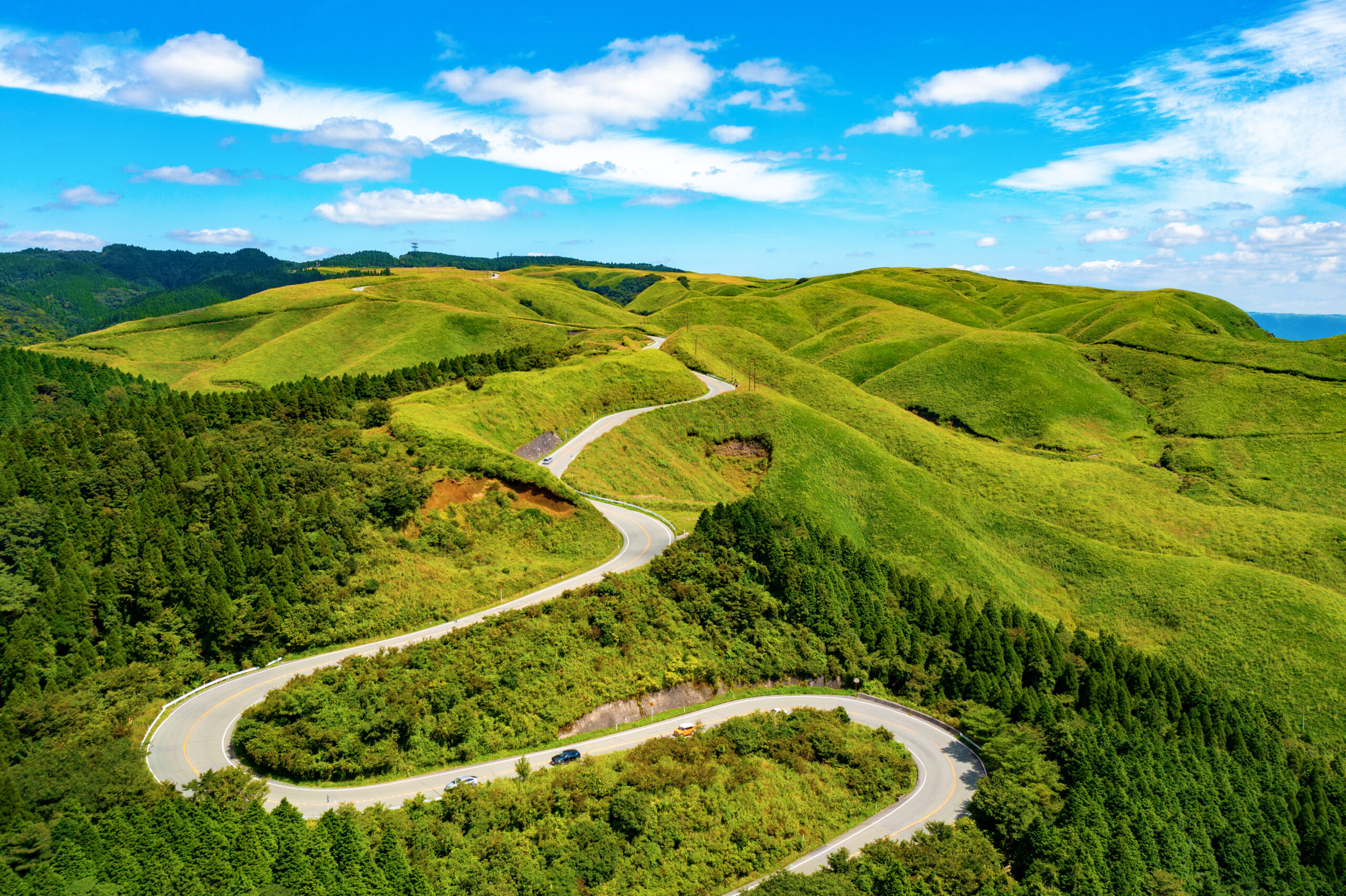One of the iconic landscapes of Aso is Japan’s largest grassland, which covers the slopes of the mountains. It is believed that these grasslands, primarily composed of susuki (Japanese silver grass), have existed for about 13,000 years and are called Bokuya (managed grasslands or pastures).
Bokuya serve as places that support local livelihoods and are valuable regional resources. Without human intervention, susuki grasslands cannot be sustained over the long term, which is why the practice of controlled burning in early spring is essential. Traditional practices in Aso such as controlled burning, grass harvesting, and grazing have been carried on continuously and contribute to preserving the ecosystems of various rare plants and animals, including Higoshi-on, Higotai, and the large blue butterfly (Oorurishijimi).
These practices are said to have continued for over a thousand years and are a testament to the wisdom of our ancestors. Their value has been recognized globally, leading to Aso being designated as a Globally Important Agricultural Heritage System by the FAO in 2013 and as a UNESCO Global Geopark in 2014.


